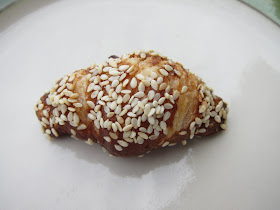This is just an update of the previous post announcing the concept. I don't want people to forget now that red grapes are coming in.
Stipulated: pH by itself does not mean the wine will be delicious, any more than brix does. If you feel the need to post this in the comments, suppress yourself. We get it.
I'd like to see vintners talk more about pH and not exclusively about brix, especially in a nice growing season like this one. Not only that, I want to show those East Coast Euro-snobs that they can't dismiss California wines as all the same. There's a movement towards balance out here but some won't believe it without numbers.
The prize for the lowest pHs recorded is a profile of you, your winery and your wine on The Gray Report. I'll wait 'til you're done with harvest and have a little free time. Some people might scoff at the value of such a prize, but I get dozens of emails from PR people every week begging for such coverage. So hey, PR people, prod those winemakers to enter. You too, Gallo and Constellation folks. You heard me. If you got it, flaunt it.
Currently I'll be profiling the Sauvignon Blanc from Grgich Hills and something from Adam Lee at Siduri, but there will be more.
By the way, if your comment is "held for approval," there's no need to resubmit. I'm going off the grid for a while but I'll see and post all your comments when I get back.
Happy harvesting!
Follow me on Twitter: @wblakegray and like The Gray Report on Facebook.












